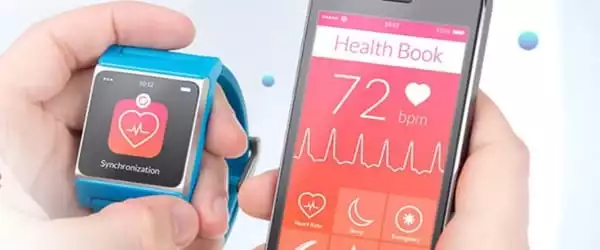Researchers revealed how wearable sensors might help researchers predict when drinking will have a harmful impact. The drunkenness was assessed using an ankle band that detects alcohol concentration from undetectable amounts of sweat.
“How much have you had to drink?” may appear to be a simple inquiry, but it is not always so. Although there are broad standards for responsible alcohol use, a person’s state of drunkenness is determined not just by the number of drinks consumed, but also by the alcohol concentration of those beverages and other factors.
Researchers from Penn State’s Department of Biobehavioral Health illustrated how wearable sensors can help researchers understand when drinking will have harmful implications in a recent article published in Alcoholism: Clinical and Experimental Research. The drunkenness was assessed using an ankle band that detects alcohol concentration from undetectable amounts of sweat.
The investigation was headed by Michael Russell, an assistant professor of biobehavioral health.
We may begin to reduce alcohol-related repercussions by employing wearable technology to foresee them, which range from car accidents to hangovers to missed work to sexual assault and beyond. According to our findings, wearable sensors can be used to assist people comprehend when their drinking is becoming dangerous.
Michael Russell
“Knowing how much alcohol you’ve consumed is complex,” Russell explained. “For example, if Person A consumes a 16-ounce pint of craft beer with a 10% alcohol level, Person B consumes a 12-ounce can of light beer with a 4% alcohol content, and Person C has a large mixed cocktail composed with multiple types of liquor, how many drinks have they all consumed?” What if A weighs 110 pounds, B weighs 220 pounds, and C weighs 185 pounds? Is the answer changing?
“We may begin to reduce alcohol-related repercussions by employing wearable technology to foresee them, which range from car accidents to hangovers to missed work to sexual assault and beyond. According to our findings, wearable sensors can be used to assist people comprehend when their drinking is becoming dangerous.”
Measuring intoxication through the skin
Transdermal alcohol-concentration sensors, which detect alcohol concentration through the skin, provide more data than periodic breathalyzer readings or self-reported drinking measurements. Sensors can record a person’s peak intoxication level, the rate at which they grow intoxicated, and how much and how long alcohol was in their system.
Transdermal sensors are also less cumbersome than other known methods for measuring drunkenness. Breathalyzers and blood sample analyses need the individual being measured to actively cooperate and might be intrusive. Transdermal sensors, on the other hand, are passive and unobtrusive, necessitating no input from the wearer.
Because 1 percent of alcohol consumed is excreted in sweat, a person’s blood alcohol concentration can be assessed on the skin. The concentration of alcohol in sweat is comparable to that in blood. As a result, transdermal sensors are a viable alternative to monitoring blood alcohol concentration, which necessitates a blood draw.

Transdermal sensors and breathalyzers serve diverse purposes. Alcohol is removed more slowly through perspiration than through breath. The quantity of alcohol in a person’s breath is approximately comparable to the amount of alcohol in their blood, however the amount of alcohol in perspiration lags slightly behind at any given time. This means that, during a traffic stop, breathalyzers produce a more accurate instantaneous reading of someone’s drunkenness. Transdermal sensors, on the other hand, provide a more detailed picture of a person’s complete drinking experience. Breathalyzers do not record how much a person drank, how quickly they drank, or how long alcohol remained in their system, whereas transdermal sensors do.
When three drinks are not the same as three drinks
This study also revealed an intuitive conclusion about intoxication: when a person becomes intoxicated by ingesting the same amount of alcohol on two distinct days, that person is more likely to suffer unfavorable repercussions on the day they became more intoxicated. In other words, if a person drank six drinks on Friday and six equivalent drinks on Saturday, they are more likely to experience effects on one of those days if their peak intoxication was higher on one of those days. Several factors, including how quickly a person consumed alcohol and what they had just eaten, can influence peak intoxication.
“Alcohol misuse produces issues ranging from the inconvenience of a moderate hangover to the tragedy of premature mortality,” Russell explained. “This study is a first step toward employing technology to limit the harm that alcohol can cause.”
This research and publishing were assisted by Robert Turrisi, professor of biobehavioral health at Penn State, and Joshua Smyth, distinguished professor of biobehavioral health and medicine at Penn State.
















